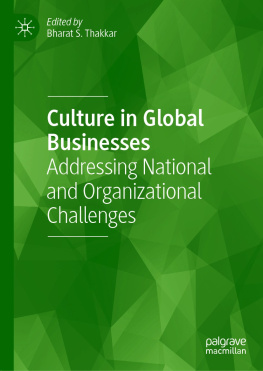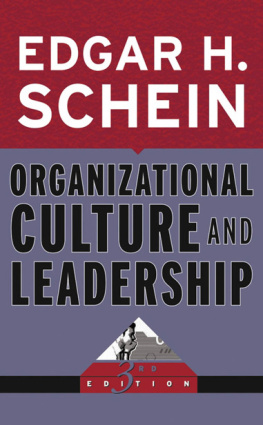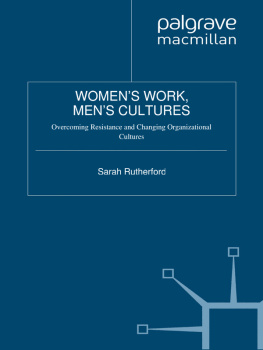First published 1998 by Ashgate Publishing
Reissued 2018 by Routledge
2 Park Square, Milton Park, Abingdon, Oxon, OX14 4RN
711 Third Avenue, New York, NY 10017, USA
Routledge is an imprint of the Taylor & Francis Group, an informa business
Copyright Robert L. Helmreich and Ashleigh C. Merritt 1998
All rights reserved. No part of this book may be reprinted or reproduced or utilised in any form or by any electronic, mechanical, or other means, now known or hereafter invented, including photocopying and recording, or in any information storage or retrieval system, without permission in writing from the publishers.
Notice:
Product or corporate names may be trademarks or registered trademarks, and are used only for identification and explanation without intent to infringe.
Publishers Note
The publisher has gone to great lengths to ensure the quality of this reprint but points out that some imperfections in the original copies may be apparent.
Disclaimer
The publisher has made every effort to trace copyright holders and welcomes correspondence from those they have been unable to contact.
A Library of Congress record exists under LC control number: 98002947
ISBN 13: 978-1-138-61338-6 (hbk)
ISBN 13: 978-0-429-46371-6 (ebk)
Stick: boomerang which, when thrown into the air, does not turn back. (Australian popular wisdom)p
Beyond criticisms and jokes about ethnocentrism and parochialism rampant down under, this piece of Australian lore clearly articulates the fundamental role played by each of the shared sets of beliefs which define different cultures across the world in shaping perception of facts and, therefore, truth. The cultural underpinnings of this gem of Australian wisdom further open the door to a legitimate challenge to unsullied scientific knowledge as enshrined by people who only believe in demonstrable fact, hard data, or are simply captive to dogma. Not that such a challenge is anything new; after all, it was almost 400 years ago that Miguel de Cervantes Saavedra powerfully asserted through his immortal Don Quixote de la Mancha that reality as such does not exist. Truth, sanity and madness, Don Quixote proclaimed, whilst charging against perceived-to-be-villains/windmills, are merely a question of the perspective through which the observer calibrates the manifestation of events, which in turn define the mental construct we come to call reality. Philosophical meandering aside, contemporary cultural research would seem to support Don Quixote and suggest that, in the final analysis, nothing is clear-cut, black or white, true or false in life across the global village.
Why should the aviation industry be interested in culture? What has culture to do with aviations goals of safety and efficiency transporting people and goods? The answer is much; indeed, much more than an appraisal at face value might suggest. Of the many endeavors undertaken by humankind, modern aviation is the global undertaking by definition. Contrasting sets of beliefs about what is perceived to be safe and efficient generate subtle yet conspicuous differences in how the business of safe and efficient transportation of humans and merchandise is conducted in different contexts. These contextual differences are an integral part of aviations fabric. Culture has been around aviation since Wilbur and Orville and Kitty Hawk, only they did not know then, and we did not know it or pretended that we did not for long thereafter. But the time to seriously think about cultural factors in aviation has come, as they have lately been brought to the forefront of attention by the always painful process of shifting through charred metal. Cultural factors are deeply embedded in the very nature of the aviation system, however, and it would be quite mistaken to consider them as yet another passing fad encouraged by media in the light of recent safety breakdowns.
My purpose in this foreword is to advance an early argument in favor of the influence of culture in the safety and efficiency of the aviation system, thus joining the many arguments so convincingly presented by Professor Robert Helmreich and Doctor Ashleigh Merritt in this book. Helmreich and Merritt direct their attention to applied research as well as to the search for practical tools to approach and deal with the relationship between culture, error and error management, and between culture and aviation human factors training for operational personnel. They devote particular attention to the link between culture and Crew Resource Management (CRM) training, a safety and prevention tool towards which few if any have contributed so much and so well as the authors of this book. They also extend their endeavors to medicine. I will limit my argument to aviation and to a conceptual discussion of the shaping influence of culture in aviations safety process. But before I argue my case, I believe it appropriate to take advantage of the privileged position of industry safety observer that I have been extremely fortunate to hold for the last nine years. Being with the International Civil Aviation Organization, at the helm of its Flight Safety and Human Factors Programme over this period, has afforded me the opportunity to chart cultural endeavors across a broad spectrum. I will therefore start the take-off roll by attempting to draw a road map to the present-day situation, briefly reviewing the history behind the scenes of cultural endeavors in aviation as I perceive it as well as a few accounts of human failures which strongly influenced this history.
On Squandering the Benefits of Foresight
Cultural factors drew the attention of aviation and of the safety community in particular through two avenues. The first avenue is the product of the insightful thinking of a meager handful of researchers, who in turn caught the attention of an even more meager handful of safety practitioners. It was the mid- to-late 1980s, and very early 1990s, a time when traditional, strongly-defended barriers and frontiers started crumbling worldwide. This was coupled with an equally resounding crumbling of social systems based on vanishing beliefs, thus laying the grounds for the dawning of the global village. It was rather obvious to some observers within aviation that the consequences of such phenomenal change had to be properly addressed if penalties in the systems performance were to be avoided. This concern was, however, a minority view, since the prevailing perception within the industry was somewhat simpler: most provider and user organizations felt that what was being faced was simply the case of a growing market and new business opportunities.
On the other hand, aviations historic love affair with and extreme reliance on gadgets, training and adherence to rules as the method of assuring safety both inherent in the industrys professional culture undoubtedly fostered the impression that technology, training and regulations were all that would be needed to cope with change. Within such a context, aviation could continue conducting business as usual, doing the same things, only on a larger scale and with new tools. It is not far-fetched to suggest that, had someone argued in those early days in favor of the importance of cultural factors, the fate reserved for such a person would have been no different from that suffered by Don Quixote, declared certifiably crazy by his contemporaries. Properly trained individuals using the latest available technology and supported by regulations were the answer to the challenges of change. Moreover, an airplane was an airplane, a cockpit was a cockpit, there was only one way of flying an airplane and professionalism dictated that the cockpit was culture-free. Or was it?









